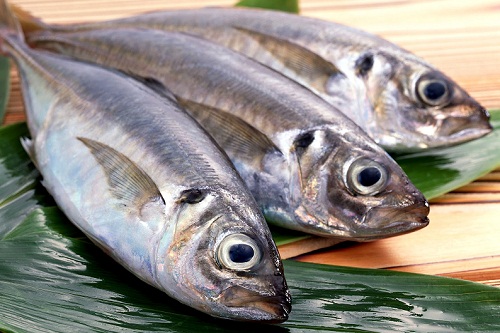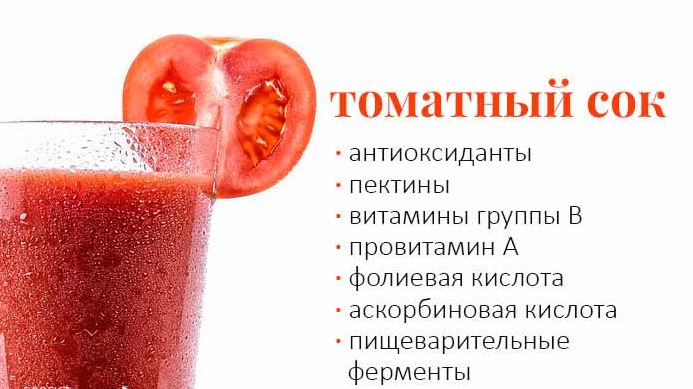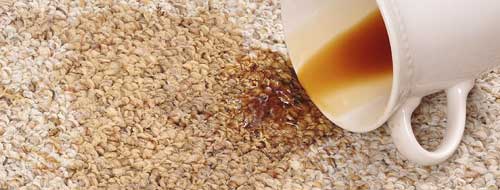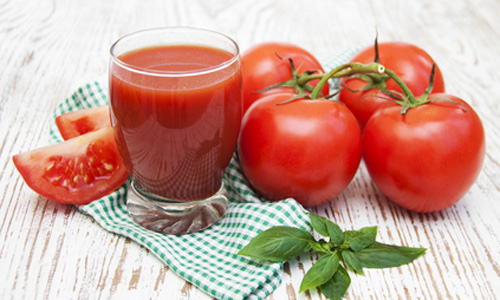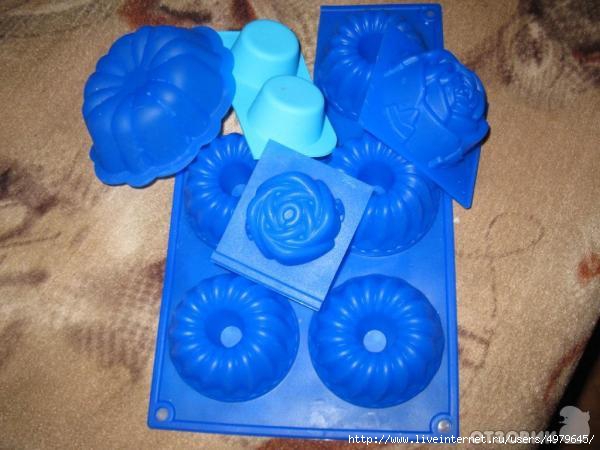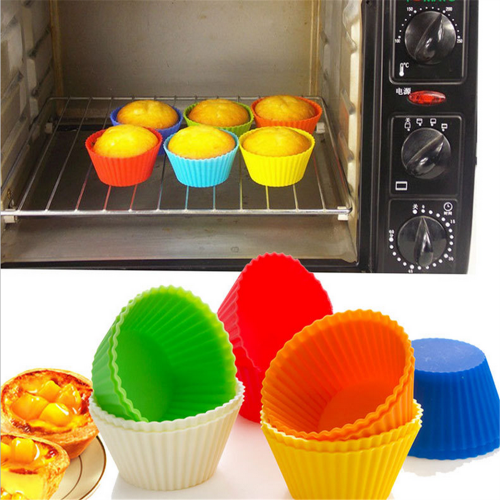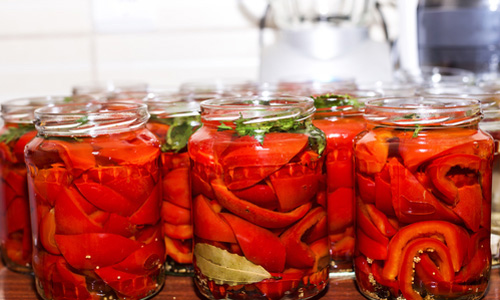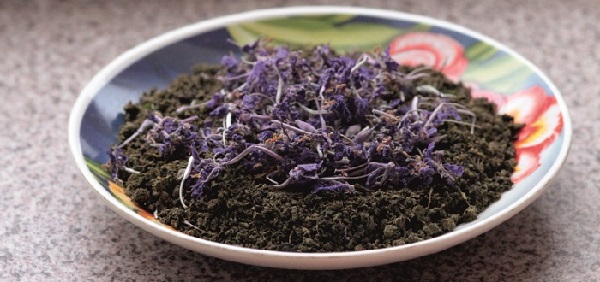Norm kmafanm in edible salt. The method for determining the amount of mesophilic aerobic and facultative anaerobic microorganisms in food
In 1 sample of light unpasteurized beer, BGKP was found;
- in 1 fish sample x \\ k - excess KMAFAnM;
- in 3 samples of air from the refrigerating chamber - excess of CFU of molds is detected - sanitary rating is "bad";
- in 4 samples of dried fish, an excess of CFU mold was detected;
- in 4 samples of dried fish, an excess of KMAFAnM was found;
- in 5 samples of drinking water (Artesian water poured through a network of automatic machines for bottling water into consumer containers) - excess of TBC.
The determination of the number of mesophilic aerobic and facultative anaerobic microorganisms (KMAFAnM or total microbial number, TBC) refers to the estimation of the size of the group of sanitary-indicative microorganisms. KMAFAnM contains various taxonomic groups of microorganisms - bacteria, yeast, mold fungi. Their total number indicates the sanitary-hygienic condition of the product, the degree of its dissemination by microflora. The optimum temperature for the growth of KMAFAnM 35-37oS (under aerobic conditions); the temperature limit of their growth is within the range of 20-45оС. Mesophilic microorganisms live in the body of warm-blooded animals, and also survive in soil, water, and air. The KMAFAnM indicator characterizes the total content of microorganisms in the product. Its control at all technological stages allows us to monitor how “clean” raw materials go into production, how their “purity” changes after heat treatment, and whether the product undergoes re-contamination after heat treatment, during packaging and storage. The KMAFAnM index is estimated by the number of mesophilic aerobic and optional anaerobic microorganisms grown in the form of visible colonies on a solid nutrient medium after incubation at 37 ° C for 24-48 hours.
KMAFAnM is the most common microbial safety test. This indicator is used everywhere to assess the quality of products, with the exception of those in the production of which special microbial cultures are used (for example, beer, kvass, sour-milk products, etc.). The value of KMAFAnM depends on many factors. The most important are the heat treatment of the product, the temperature during its transportation, storage and sale, product humidity and relative humidity, oxygen, product acidity, etc. An increase in KMAFAnM indicates the growth of microorganisms, including pathogens and microorganisms that cause spoilage of the product (for example, mold).
Although the total number of KMAFAnM bacteria cannot directly indicate the presence or absence of pathogenic bacteria in food products, this indicator is quite widely used, for example, in the dairy industry. The KMAFAnM (OMCh) indicator characterizes the sanitary and hygienic production conditions and storage conditions for dairy products. Products containing a large number of bacteria, even non-pathogenic and not changing their organoleptic characteristics, cannot be considered full-fledged. A significant content of viable bacterial cells in food products (with the exception of those used in the manufacture of starter cultures) indicates either insufficient heat treatment of raw materials, poor washing of equipment, or poor storage conditions of the product. Increased bacterial contamination of the product also indicates its possible spoilage.
For the consumer, the KMAFAnM (OMC) indicator characterizes the quality, freshness and safety of food products. At the same time, evaluating the quality of a product only for this indicator has a number of disadvantages. Firstly, this is only a general, quantitative assessment of microorganisms, since the study does not take into account pathogenic, conditionally pathogenic, psychrophilic and thermophilic microorganisms. Secondly, the method is unacceptable for products containing technological and specific microflora.
The KMAFAnM indicator also allows you to assess the level of sanitary and hygienic conditions of the social sphere at work, it allows you to identify violations of the storage and transportation of the product.
According to KMAFAnM
But quality assessment for this indicator has a number of disadvantages:
Anaerobic microorganisms are not considered;
Psychrophilic and thermophilic microorganisms are not taken into account;
Only quantifies microbiota;
Does not take into account pathogenic microorganisms;
Not applicable for products containing technological microbiota.
2. Sanitary-indicative microorganisms:
Enterobacteriaceae family bacteria;
Enterococci.
Detection of sanitary-indicative microorganisms in any object indicates its contamination with human or animal secretions and the possible presence of pathogenic microorganisms epidemiologically associated with the corresponding excreta.
Detection of bacteria of the group of Escherichia coli (BGKP). Their presence indicates fecal contamination of the facility. Quantitative values \u200b\u200bof this indicator characterize the degree of this pollution. BGKP can get into food products with water, dust, through dirty hands, be carried by insects.
Standards include bacteria of the Enterobacteriaceae family among sanitary-indicative microorganisms. This family includes many types of non-pathogenic, opportunistic and pathogenic microorganisms, therefore, the detection in 1 g (cm 3) of a product of more than 10 2 CFU of enterobacteria not belonging to pathogenic species indicates its potential epidemiological danger.
The presence of enterococci in the environment and food products, and especially E. faecalis, indicates fresh fecal contamination. Usually, their detection in finished products indicates violations of technological production conditions.
3. Conditionally pathogenic microorganisms:
Escherichia coli;
Staphylococcus aureus;
Bacteria of the genus Proteus;
Bacillus cereus;
Sulfite-reducing clostridia;
Vibrio parahaemolyticus.
E. coli (Escherichia coli) has a dual meaning as a sanitary-indicative and conditionally pathogenic microorganism.
Coagulase-positive Staphylococcus aureus (Staphylococcus aureus) is defined as a potentially dangerous microorganism in products that have undergone heat treatment. An increased amount of it in food is a sign of secondary seeding of the latter. The microorganism enters the products from contaminated equipment, inventory, from the skin, from the nasopharynx of personnel, as well as from sick animals. Staphylococci are characterized by resistance to adverse environmental factors, they multiply intensively at a temperature of 18 ÷ 20ºС, in slow motion - at 5 ÷ 6ºС. They can reproduce in concentrated solutions of sugar (up to 60%) and salt (up to 12 ÷ 14%). They remain viable for 6 months in the dried state. Propagation of Staphylococcus aureus in food products from 10 6 to 10 9 CFU / g (cm 3), regardless of the initial seeding, leads to the accumulation of enterotoxin.
Of the bacteria of the genus Proteus, two species P. vulgaris and P. mirabilis are the causative agents of toxicoinfections.
Waxy bacillus (Vacillus cereus) is extremely widespread in nature, its main habitat is soil. It is also found in open water bodies (up to 10 3 ÷ 10 4 CFU / cm 3), in tap water and in the air. These objects serve as a source of contamination of equipment and apparatus of food industry and public catering enterprises and of seeding of various food products. If B. cereus is detected in an amount of more than 10 3 CFU / g (cm 3) and the absence of pathogenic microbiota, this microorganism can be considered the cause of food poisoning.
Sulfite-reducing clostridia are spore-forming anaerobic bacteria, mainly represented by C. perfringens and C. sporogenes. C. perfringens are constantly present in the intestines of humans and animals and are an indicator of fecal contamination. The presence in the products of sulfite-reducing clostridia in an amount of more than 10 2 CFU / g (cm 3) indicates a violation of the sanitary and hygienic regime in the production, in particular, poor preparation of equipment, ingress of soil, dirty water, etc., and in addition , for the possible threat of the presence of C. botulinum.
In the soil and dust of S. perfringens premises, almost 100% of the samples were found, in air of public catering enterprises in 10–12% of cases, on the equipment of the catering unit - in almost 30% of cases, and on sanitary clothing of the employees of the catering unit - 11 ÷ 19% of cases . On food products, C. perfringens is especially often found on meat and meat products, which are most involved in outbreaks of foodborne illness. In addition to intravital seeding of animal tissues and organs, contamination can occur during carcass cutting, chopping meat, adding breading and spices, often with a high degree of seeding. During cooking, spores of C. perfringens survive and can germinate and multiply to enormous amounts that can cause food poisoning. Spores of C. perfringens may also contain plant products. A critical level of contamination of food products with spores of C. perfringens is considered to be ≥ 10 5 CFU / g (cm 3).
Parahemolytic or halophilic vibrios (Vibrio parahaemolyticus) are widespread in the external environment, primarily in coastal sea waters, marine fish and seafood, in bottom marine sediments. One of the representatives of the genus Vibrio, which includes about 45 species, V. Parahaemolyticus caused numerous outbreaks of gastroenteritis associated with the use of contaminated seafood - frozen, salted, smoked fish, and mollusks. The circulation of this microorganism has been established according to the scheme sea water - fish - human - wastewater - sea water.
4. Pathogens:
Salmonella
Listeria monocytogenes;
Bacteria of the genus Yersinia.
Bacteria of the genus Salmonella are currently recognized as indicator for the entire group of pathogenic intestinal bacteria. This is due, firstly, to the presence of effective methods for their detection and, secondly, to the fact that the detection of salmonella to a certain extent corresponds to the detection of shigella in the same object, which are methodically more difficult to isolate than salmonella.
Currently, normative documents normalize the amount of product in g (cm 3), in which the presence of bacteria of the genus Salmonella is unacceptable.
Bacteria of the genus Yersinia, and in particular Y. enterocolitica, are the causes of infectious diseases with a variety of clinical manifestations. Yersiniosis is often mistakenly diagnosed as enterocolitis, foodborne toxicoinfection, scarlet fever, rubella, hepatitis, appendicitis, rheumatism, acute respiratory disease, etc.
The ability to reproduce at a temperature of 0 ÷ 5ºС in refrigerators, vegetable stores, etc., leads to an increase in their number on contaminated products. Yersinia are not demanding of environmental conditions and actively reproduce in soil and water. The main carriers of these microorganisms are wild rodents and birds. The main method of human infection is alimentary. The infection is transmitted through contaminated food products, more often with soil and water pollution, less often with animal secretions. Most often, single diseases and group outbreaks arise from the use of infected dairy products and vegetables - cabbage, carrots, onions, etc.
Listeria monocytogenes is a causative agent of a dangerous infectious disease of zoonotic nature with a predominantly food-borne transmission. Pathogenic listeria is widespread in nature and can contaminate a variety of products - dairy, meat, fish, eggs, seafood, vegetable raw materials, etc. Normative documents establish the mass or volume of the product in which these bacteria should be absent.
5. The damage to microorganisms includes:
Mold fungi;
Lactic acid bacteria.
Normative documents set quantitative criteria for their content in some groups of food products. However, the list of this group of microorganisms seems incomplete. Thus, the importance of putrefactive bacteria of the genus Pseudomonas as causative agents of spoilage is shown. The microbiological stability of food products during storage must be evaluated by such indicators as KMAFAnM, thermophilic and psychrophilic microorganisms, as well as special types (or genera) of microorganisms - typical pathogens. For example, in products intended for storage at a temperature of more than 30ºС ± 5ºС, the number of thermophiles is determined; for storage at uncontrolled temperature 20ºС ± 5ºС - KMAFAnM; for storage at low temperature - the number of psychrophiles.
6. Microorganisms starter microbiota and probiotic microorganisms:
Lactic acid and propionic acid bacteria;
Bifidobacteria;
Among the standard indicators included starter microbiota microorganisms and probiotic microorganisms (for products with a normalized level of biotechnogenic microbiota). Among these indicators are indicators of the quantitative content of lactic acid, propionic acid bacteria, yeast, bifidobacteria and others. The values \u200b\u200bof these indicators are determined by the specifics of the production of a particular product and its purpose.
Control questions:
1. What document governs food safety criteria and methods for their determination?
2. What is the main principle of the HACCP quality control system?
3. List the main provisions of the HACCP control system.
4. The main principle of the international system for assessing the quality of production according to ISO standards?
5. What hazards are included in the mandatory list? Where are they listed?
The invention relates to microbiology, in particular to the determination of food contamination. The method includes preparing meat-peptone agar, pouring it into Petri dishes, sampling from food products, preparing a suspension from a sample of food products, preparing decimal dilutions of the test suspension and placing decimal dilutions of the test suspension in Petri dishes, culturing and counting the number of colonies using the formula: x \u003d an × 10, n is the degree of dilution. Moreover, for the preparation of decimal dilutions of the test suspension, a 0.6-0.8% solution of meat-peptone agar is used, while decimal dilutions of the test suspension are placed on membrane filters located on the surface of the meat-peptone agar in a Petri dish. The method is original in solution, easy to implement, informative, gives statistically reliable results; significantly reduces the consumption of nutrient media, sterile bacteriological dishes and analysis time; allows you to give a real quantitative assessment of the content of microorganisms that produce confluent growth and form very small colonies, and also allows you to study population processes using light microscopy. 1 ill., 1 tab.
The invention relates to the field of veterinary and sanitary examination, sanitation and microbiology, in particular to the determination of food contamination and the sanitary and hygienic state of environmental objects.
The closest is a method for determining the number of microorganisms in sausages and meat products in water. A known method for determining the amount of mesophilic aerobic and facultative anaerobic microorganisms in 1 g of the product is as follows: preparing a solution for dilution and meat-peptone agar for sowing; analysis; accounting of results. 1. The disadvantage of the existing method is that the sodium chloride solution (0.85%) used for diluting samples is non-buffered and isotonic only with respect to mammalian cells, and a large amount of nutrient medium, bacteriological dishes and working costs are used for analysis time. In addition, this method does not allow a real quantitative assessment of the content of microorganisms giving confluent growth and forming very small (dewy) colonies (Methods of General Bacteriology. Edited by F. Gerhard et al. M: Mir, 1983, p. 442-512).
The objective of the invention is to reduce the amount of nutrient medium, bacteriological utensils and working hours by using a physiological solution of semi-liquid MPA instead of 0.85% sodium chloride solution, followed by sowing a drop of diluted test suspension on the surface of the membrane filter.
The application of this method is based on the fact that as a physiological solution for dilution, a physiological solution of semi-liquid meat-peptone agar (0.6-0.8%) is used, consisting of 1 dm 3 of distilled water, 10 g of peptone, 5 g of sodium chloride, 0.3 g of anhydrous KH 2 PO 4, 0.6 g of anhydrous NaH 2 PO 4 and 0.6-0.8 g of agar-agar; The pH of the medium is 7.0-7.2, drops of which are applied to the surface of membrane filters.
Use as a dilution solution (0.6-0.8% meat-peptone semi-liquid agar) followed by sowing a drop of diluted test suspension on a membrane filter is original in solution, easy to implement, informative, gives statistically reliable results; significantly reduces the consumption of nutrient media, sterile bacteriological dishes and analysis time; allows you to give a real quantitative assessment of the content of microorganisms that produce confluent growth and form very small (dewy) colonies, and also allows you to study population processes using light microscopy.
For the analysis, samples of food products are taken in accordance with current regulatory documents (GOST 18963-73. Drinking water. Methods of sanitary-bacteriological analysis. M., 1986; GOST 9958-81. Sausage products and meat products. M., 1982; GOST 7702.2 .1-95. Poultry meat, offal and semi-finished bird products. M., 1994).
To prepare a suspension, a portion of food products is placed in a sterile flask (glass) of a homogenizer and a 0.85% solution of sodium chloride in four times is added. Homogenization is carried out in an electric mixer. First, the material is crushed into pieces at a slower speed of rotation of the knives, then at 15000-20000 rpm for 2.5 minutes. In the absence of a homogenizer, it is allowed to prepare the test suspension in a sterile porcelain mortar by grinding 20 g of the product with 2-3 g of sterile sand, gradually pouring 80 cm of sterile physiological saline. For inoculation on culture media with a sterile graduated pipette, a suspension is taken after 15 min exposure at room temperature. 1 ml of suspension contains 0.2 g of product.
Meat-peptone agar is poured into glass or plastic Petri dishes (9 cm in diameter) and after the agar has cooled, 5-6 membrane filters are placed on its surface with sterile tweezers. The diagram shows the main stages of determining the number of mesophilic aerobic and facultative anaerobic microorganisms of the proposed method.
0.6-0.8% saline solution of semi-liquid MPA is poured into 9 cm 3 into sterile tubes. Then, in 9 cm 3 physiological solution of semi-liquid MPA, decimal dilutions of the test suspension are prepared. For this, 1 cm 3 of the suspension under investigation is introduced into the first test tube with 9 cm 3 of semi-liquid agar, from the first tube, thoroughly mixing 1 cm 3 of the suspension under investigation, transferred to the second, etc. 0.1 ml (1 drop) of the diluted culture is applied to a membrane filter located on MPA in a cup. 5-6 drops of agar with different dilutions of the culture can be placed in one cup. Diluted agar with a diluted culture solidify after 10-15 minutes. After this, the Petri dishes were cultured upside down in an incubator at 37 ° C for 48 hours. To determine the number of viable bacterial cells, colony counts in agar drops are counted.
To determine the number of mesophilic aerobic and facultative anaerobic microorganisms, the number of colonies grown is multiplied by the degree of culture dilution according to the formula:
where x is the number of mesophilic aerobic and facultative anaerobic microorganisms,
a is the number of colonies grown,
n is the degree of dilution.
For quantitative assessment of the content of microorganisms giving confluent growth and forming very small (dewdrop) colonies, as well as for studying population processes using light microscopy, colonies grown on membrane filters are fixed in pairs of 25% glutaraldehyde for 30-40 minutes. The membrane filter is then applied to the surface of the slide and a few drops of propylene oxide are applied to it. The membrane filter becomes transparent and even very small (dewy) colonies can be counted in a microscope or a magnifying glass and, if necessary, microphotography can be performed.
The method is illustrated in the following specific examples of implementation (see table).
Legend: method 1 - the closest analogue
method 2 - proposed
Example 1. The determination of the number of mesophilic aerobic and facultative anaerobic microorganisms in cooked sausage. The determination of the amount of mesophilic aerobic and facultative anaerobic microorganisms was carried out in two ways: method 1 (prototype) - For analysis, meat-peptone agar is poured into glass or plastic Petri dishes (9 cm in diameter). Sampling of food products was carried out in accordance with current regulatory documents (GOST 9958-81. Sausage products and meat products. M., 1982). To prepare a suspension, a weighed portion of food products was placed in a sterile flask (glass) of a homogenizer and a 0.85% solution of sodium chloride in four times was added. Homogenization was carried out in an electric mixer. First, the material was crushed into pieces at a slower speed of rotation of the knives, then at 15000-20000 rpm for 2.5 minutes. For crops on culture media, a suspension was taken after a 15 min exposure at room temperature with a sterile graduated pipette. 1 ml of suspension contains 0.2 g of product. Prepared 3 dilutions of the test suspension in physiological sodium chloride solution: physiological sodium chloride solution is poured into 9 cm 3 into sterile tubes. Then, in 9 cm 3 physiological saline of sodium chloride, decimal dilutions of the test suspension are prepared. To do this, add 1 cm 3 of the investigated suspension to the first test tube with 9 cm 3 of sodium chloride, from the first test tube, thoroughly mixing 1 cm 3 of the investigated suspension, transfer to the second, etc. and then from each dilution, 0.1 ml was applied to a Petri dish (3 cups total). After this, Petri dishes were cultured upside down in an incubator at 37 ° C for 48 hours. To determine the number of viable bacterial cells, colony counts in agar droplets were counted. To determine the number of mesophilic aerobic and facultative anaerobic microorganisms, the number of colonies grown was multiplied by the degree of culture dilution according to the formula:
where x is the number of mesophilic aerobic and facultative anaerobic microorganisms,
a is the number of colonies grown,
n is the degree of dilution,
Method 2 (proposed) includes preparing a solution for dilution (0.6-0.8% physiological solution of semi-liquid MPA 0.6-0.8% physiological solution of semi-liquid MPA) and meat-peptone agar for sowing; analysis; accounting of results.
For analysis, meat-peptone agar is poured into glass or plastic Petri dishes (9 cm in diameter), after the agar has cooled, up to 6 membrane filters are placed on its surface with sterile forceps. Sampling of food products was carried out in accordance with current regulatory documents (GOST 9958-81. Sausage products and meat products. M., 1982). To prepare a suspension, a portion of food products was placed in a sterile flask (glass) of a homogenizer and a 0.85% solution of sodium chloride in four times was added. Homogenization was carried out in an electric mixer. First, the material was crushed into pieces at a slower speed of rotation of the knives, then at 15000-20000 rpm for 2.5 minutes. For crops on culture media, a suspension was taken after a 15 min exposure at room temperature with a sterile graduated pipette. 1 ml of suspension contains 0.2 g of product. Prepared 3 dilutions of the test suspension in saline MPA: 0.6-0.8% saline solution of semi-liquid MPA is poured into 9 cm 3 into sterile tubes. Then, in 9 cm 3 of physiological solution of semi-liquid MPA, decimal dilutions of the test suspension are prepared. To do this, 1 cm 3 of the test suspension is added to the first test tube with 9 cm 3 of semi-liquid agar, from the first test tube, thoroughly mixing 1 cm 3 of the test suspension, transfer to the second, etc. and then from each dilution, 0.1 ml was applied to the surface of a membrane filter located on MPA in a Petri dish. Moreover, 3 dilutions were placed in one Petri dish. After this, Petri dishes were cultured upside down in an incubator at 37 ° C for 48 hours. To determine the number of viable bacterial cells, colony counts in agar droplets were counted. To determine the number of mesophilic aerobic and facultative anaerobic microorganisms, the number of colonies grown was multiplied by the degree of culture dilution according to the formula:
where x is the number of mesophilic aerobic and facultative anaerobic microorganisms,
a is the number of colonies grown,
n is the degree of dilution.
The number of mesophilic aerobic and facultative anaerobic microorganisms, determined by method 1 - (9 × 10 2) and method 2 - (10 × 10 2), did not differ significantly.
Example 2. The determination of the number of mesophilic aerobic and facultative anaerobic microorganisms in meat. The determination of the amount of mesophilic aerobic and facultative anaerobic microorganisms was carried out in two ways: method 1 (prototype) - For analysis, meat-peptone agar is poured into glass or plastic Petri dishes (9 cm in diameter). Sampling of food products was carried out in accordance with current regulatory documents (GOST 9958-81. Sausage products and meat products. M., 1982). To prepare a suspension, a weighed portion of food products was placed in a sterile flask (glass) of a homogenizer and a 0.85% solution of sodium chloride in four times was added. Homogenization was carried out in an electric mixer. First, the material was crushed into pieces at a slower speed of rotation of the knives, then at 15000-20000 rpm for 2.5 minutes. For crops on culture media, a suspension was taken after a 15 min exposure at room temperature with a sterile graduated pipette. 1 ml of suspension contains 0.2 g of product. Prepared 6 dilutions of the test suspension in physiological saline of sodium chloride: physiological saline of sodium chloride is poured into 9 cm 3 into sterile tubes. Then, in 9 cm 3 physiological saline of sodium chloride, decimal dilutions of the test suspension are prepared. To do this, add 1 cm 3 of the investigated suspension to the first test tube with 9 cm 3 of sodium chloride, from the first test tube, thoroughly mixing 1 cm 3 of the investigated suspension, transfer to the second, etc. and then from each dilution 0.1 ml was applied to a Petri dish (6 cups total). After this, Petri dishes were cultured upside down in an incubator at 37 ° C for 48 hours. To determine the number of viable bacterial cells, colony counts in agar droplets were counted. To determine the number of mesophilic aerobic and facultative anaerobic microorganisms, the number of colonies grown was multiplied by the degree of culture dilution according to the formula:
where x is the number of mesophilic aerobic and facultative anaerobic microorganisms,
a is the number of colonies grown,
n is the degree of dilution.
Method 2 (proposed), comprising preparing a solution for dilution (0.6-0.8% physiological solution of semi-liquid MPA and 0.6-0.8% physiological solution of semi-liquid MPA) and meat-peptone agar for sowing; analysis; accounting of results.
For analysis, meat-peptone agar is poured into glass or plastic Petri dishes (9 cm in diameter), and after the agar has cooled, 5-6 membrane filters are placed on its surface with sterile tweezers. Sampling of food products was carried out in accordance with current regulatory documents (GOST 9958-81. Sausage products and meat products. M., 1982). To prepare a suspension, a weighed portion of food products was placed in a sterile flask (glass) of a homogenizer and a 0.85% solution of sodium chloride in four times was added. Homogenization was carried out in an electric mixer. First, the material was crushed into pieces at a slower speed of rotation of the knives, then at 15000-20000 rpm for 2.5 minutes. For crops on culture media, a suspension was taken after a 15 min exposure at room temperature with a sterile graduated pipette. 1 ml of suspension contains 0.2 g of product. Prepared 6 dilutions of the test suspension in saline MPA: 0.6-0.8% saline solution of semi-liquid MPA is poured into 9 cm 3 into sterile tubes. Then, in 9 cm 3 physiological solution of semi-liquid MPA, decimal dilutions of the test suspension are prepared. For this, 1 cm 3 of the suspension under investigation is introduced into the first test tube with 9 cm 3 of semi-liquid agar; and then from each dilution, 0.1 ml was applied to the surface of a membrane filter located on MPA in a Petri dish. Moreover, 6 dilutions were placed in two Petri dishes. After this, Petri dishes were cultured upside down in an incubator at 37 ° C for 48 hours. To determine the number of viable bacterial cells, colony counts in agar droplets were counted. To determine the number of mesophilic aerobic and facultative anaerobic microorganisms, the number of colonies grown was multiplied by the degree of culture dilution according to the formula:
where x is the number of mesophilic aerobic and facultative anaerobic microorganisms,
a is the number of colonies grown,
n is the degree of dilution.
After cultivation in Petri dishes at 37 ° C for 48 h, the number of mesophilic aerobic and facultative anaerobic microorganisms, determined by method 1 - (8 × 10 5) and method 2 - (7 × 10 5) did not differ significantly.
From the above examples it can be seen that in a comparative assessment of the two methods, the number of CFU determined by the proposed method did not differ significantly from that when determined by the generally accepted method. At the same time, the developed method has several advantages. So, to determine the number of viable cells from five types of samples amounted to: according to the existing - 98 min; by the proposed method - 48 minutes The cost of the nutrient medium amounted to the prototype - 420 ml; by the proposed method - 135 ml. The number of Petri dishes was prototype - 28 pieces; according to the proposed method - 9 pieces.



